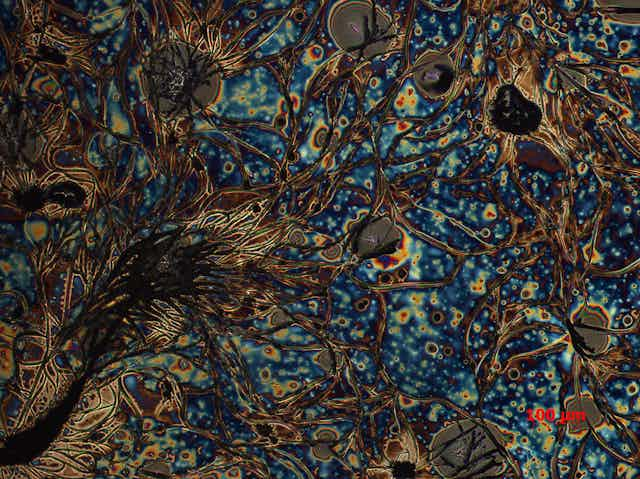Major advances in technology are being spawned by the synthesis and application of nanoparticles and nanocomposites. The nanotechnology revolution offers great promise for major advances in medicine, manufacturing, electronics, sensor development, energy production, pollution control and environmental remediation, among others.
The benefits are huge. But concerns have emerged about the potential negative impacts to the environment and human health.
Engineered, or manufactured, nanomaterials are particles between 1 and 100 nanometres in diameter. A nanometre is one millionth of a millimetre.
They make it possible to move material that is highly insoluble, such as many metals like gold and silver. This is a good thing for many applications; in disease diagnoses, metal nanoparticles are coated with a protein that is attracted to tumour cells which allows easier detection, and sometimes helps directly in treatment.
But this change in transportability may have adverse impacts because it makes the metal easier to absorb than it normally is.
When manufactured nanomaterials (MNMs) are applied to the land as biosolids – for example, through municipal waste streams – they can accumulate over time. There are no specific guidelines from the EPA for disposal of waste nanomaterials, so the management requirements are the same as for the material in its conventional solid state.
Small amounts will also enter the sewers through household use. We don’t really understand if that poses an environmental risk to terrestrial ecosystems.
The Australian Therapeutic Goods Administration recently reviewed the literature on nanomaterials in sunscreens and gave them a tick for safe use. But an Australian review by CSIRO highlighted the lack of knowledge about MNMs in the environment.
Professor Paul Bertsch from CSIRO has investigated whether metal and metal oxide nanoparticles could be taken up by, and be toxic to, microorganisms, detritivores (organisms that eat pieces of organic detritus like earthworms) and plants.
They showed that metal and metal oxide nanoparticles do accumulate in soils that they are applied to, rather than aggregating or dissolving, and can be toxic to microorganisms, plants, nematodes and earthworms.
Interestingly, they found that when nanomaterial contaminants build up in food and that food is then eaten, the contaminants accumulate more effectively in the eater’s tissues than they would if eaten directly. This suggests that accumulation of MNMs in the food chain is a more serious concern than direct exposure.
Earthworms living in contaminated soil take up MNMs. This starts the bioaccumulation of MNMs in the food chain, which continues as the worms are eaten by a predator (such as worm-eating snails, frogs, birds and unhappy children).
For humans though, plant uptake is likely to be the most important starting point. But, can plants take up MNMs?
Recent research led by the University of Texas showed that zinc oxide and cerium dioxide, both present in some skin care products amongst other things, are taken up by soybeans.
The zinc oxide nanoparticles were transformed in the soybean plant, and the plant treated them the same way it treated zinc. This suggests that nanomaterial zinc contamination may be the same as other forms of zinc contamination, and can be managed similarly.
The cerium oxide, however, remained as nanoparticles and some were taken up by the plant – the soybean could not exclude them. These nanoparticles were present in the seed pods, which meant they could be eaten by something and therefore enter the food chain, as well as being taken up by the next generation of soybeans.
This could lead to “biomagnification” of the nanoparticles, as they become more and more concentrated in tissues of organisms as they pass up the food chain. Examples of contaminants that have probably been biomagnified in nature are DDT and mercury. The potential and consequences of biomagnification of various nanoparticles is still largely unknown.
So many known unknowns provide many exciting scientific questions about what happens to nanomaterials in soils and plants. Though we so far know very little, we should exercise care when we dispose of waste containing MNMs, and we should be extra careful about how we manage disposal sites.
Professor Paul Bertsch will deliver the GW Leeper Memorial Lecture, open to the public, on the topic of manufactured nanomaterials and bioaccumulation at the University of Melbourne on November 22.

